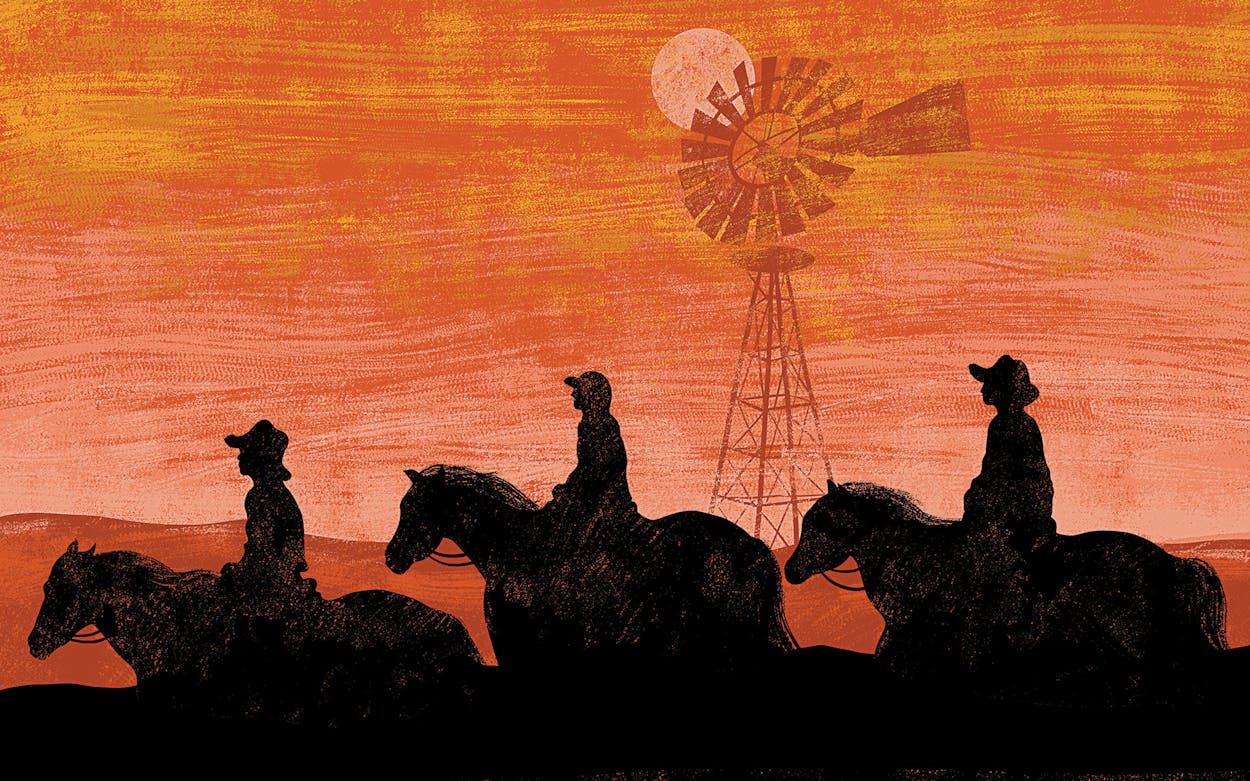Sterry Butcher had no intention of becoming Texas’s foremost chronicler of twenty-first-century rural life. Raised in Fort Worth, she liked riding horses but never expected to end up writing about them. She attended Reed College, in Oregon, and graduated with a degree in English and a vague ambition to become a novelist.
Then, in 1992, she visited Marfa while spending Thanksgiving with her family in far West Texas. “Marfa then consisted of two little Mexican cafes, two old-man bars, a feed store, a courthouse, a public library, a city hall, a combination gas station–butcher shop, a grocery store, a single blinking red light, and an art museum,” Butcher says. “I thought, ‘Wow, everything you need is right here in one place.’ ”
Six months later, the 25-year-old Butcher moved to Marfa with plans to work on a book, but before long, she found herself on the staff of the town’s weekly paper, the Big Bend Sentinel. She covered city council meetings, groundwater disputes, Fourth of July parades, high school football games, and the exploits of Marfa’s roughly two thousand residents, including one elderly woman who had never lost at Scrabble.
In 2014 then–Texas Monthly editor Jake Silverstein hired Butcher to write the magazine’s Country Notes column. She composed essays about swimming in a water storage tank, waiting for rain, and shoeing a horse. She wrote about the way people in small towns wave when they pass each other in their pickup trucks, and she detailed an encounter between her cat and a rattlesnake.
Butcher also produced classic portraits of West Texans, from a large-animal veterinarian to a wiry cowboy who breaks wild horses. “I discovered that living in a small town and writing about the tiniest of things can be deeply moving,” she says. “In a small town, you quickly realize that God is in the details.”

One of Butcher’s most enduring pieces is “The Boys of the Dipper Ranch.” She followed three brothers, the eldest only fifteen, who lived and worked alongside their parents as caretakers on a 50,000-acre ranch outside Marfa. They raised colts and cattle, hunted for bobcats, built a roping arena, rode big, beautiful horses, and got home just in time for their mother’s home-cooked meals.
“What drew me to these boys was that they were living an authentic life, one barely touched by modern civilization, a life most outsiders did not know still existed,” Butcher says. “It was hard to imagine a better story than that one.”
This article originally appeared in the December 2022 issue of Texas Monthly with the headline “Behind the Story.” Subscribe today.









